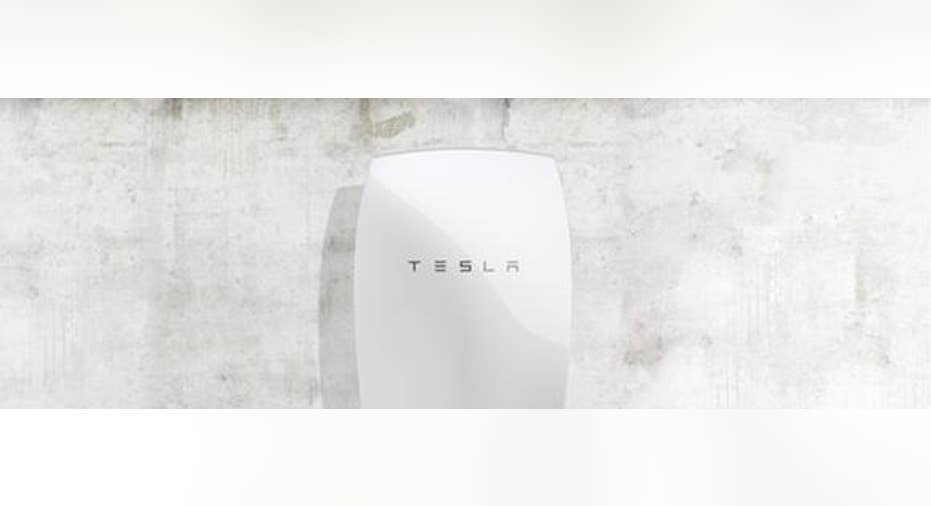Could Falling Costs Be a Bad Omen for Tesla Motors' Gigafactory?

Image source: Tesla Motors.
Disruption on the scale of what Tesla Motors is trying to pull off in the vehicle and energy-storage markets would be an incredible feat for any company. We haven't seen an upheaval on the level of the Gigafactory since Chinese companies upended energy as we know it by building billions of dollars' worth of solar manufacturing plants in the mid- to late 2000s. And that disruption may have left a few lessons of caution for investors.
In a matter of just a few years, the world went from a few gigawatts of solar manufacturing capacity to 70 GW of capacity, and solar panel costs plunged as much as 90% in a matter of a decade. That's along the lines of what Tesla Motors is trying to do to disrupt its end markets.
What Tesla Motors investors should understand about what the manufacturing capacity did to disrupt the energy market is that while the solar industry itself is enduring, most of those manufacturers who built out the early capacity that changed the energy industry are now bankrupt. Suntech Power, Q-Cells, and Yingli Green Energy all held the title of world's largest solar manufacturer at one time, and they've gone through insolvency or are close to it (Yingli). Why this happened in solar is also something Tesla Motors may not be able to avoid.
Being a leader in manufacturing is dangerous The challenge Tesla Motors faces is making money in a business where costs are falling rapidly. For example, if you look at the $5 billion up-front cost of the Gigafactory, it's easy to see how the company will make money if it can sell its 35 GWh annual capacity for the $350 per kWh --the price a Powerwall is quoted at today -- but the math gets harder as costs fall to where the competition is pricing cells, and that's really the basis on which we should judge the Gigafactory.
In the table below, I've built out a model showing what Tesla has to make on each kWh of batteries made just to break even. I've assumed that Tesla and its partner Panasonic must generate a return on investment of 10% on their $5 billion Gigafactory to meet its cost of capital.This only takes cell production into account, although there will be other parts of the value chain produced there.
Author's calculations.
Based on the stated cell capacity of 35 GWh each year, Tesla would need to make a $14.29 cash margin to meet its cost of capital just to build the plant. That would require incredibly low manufacturing costs considering what battery sells are already selling for on the open market.
General Motors recently said that entering 2016, its cell cost for batteries will be $145 per kWh and it expects costs to be below $100 per kWh by 2021, which may be a conservative estimate considering its current price is down from $400-$500 per kWh just a few years ago. We saw this in the solar industry: Once capacity starts being built out and costs start coming down, the cost curve changes faster than anyone expects.
If we take GM's cost figure and apply it to the Gigafactory the challenge becomes clear. Assume that Telsa could still buy cells for $145 per watt in 2017 (the Gigafactory will effectively be competing with battery cell prices on the open market so that's the comparison to use) and prices will fall 20% annually through 2020 with a 20% cash margin on production.
Author's calculations.
If the price of cells falls to below $75 per watt, Tesla Motors will be near breakeven of its cost of capital with a 20% cash margin. And with the cost of batteries falling year after year and competitors building capacity rapidly, it's unlikely it will be able to increase that margin.
Image source: Tesla Motors.
The curse of falling costs The analysis I've done above doesn't say anything about what Tesla's margin on cars will be or what value it may be able to add somewhere else in manufacturing, only that its returns on building the Gigafactory may not be as lofty as you might think.
What's important to see here is that Tesla Motors is facing the challenge of making money in a business where a massive up-front investment is needed to build capacity, and the price of what you're selling falls every year.It's hard to make a return on investment in that kind of environment, and it's the dynamic that shows why battery manufacturers, including Tesla's partner Panasonic, have typically had a very hard time making money.
Can Tesla Motors make money where others can't? It's worth thinking about how Tesla Motors is going to make money on the billions it's investing in the Nevada desert. I've used the solar industry as an example of what can happen, and considering the similarities between batteries and solar manufacturing. I think the comparison fits. They're both massive market opportunities, both require large up-front investments to build capacity, and both are seeing costs fall faster than most people realize.
Those market dynamics left most early solar manufacturers in financial ruin. Tesla Motors may have to work harder than you might think to avoid the same fate.
The article Could Falling Costs Be a Bad Omen for Tesla Motors' Gigafactory? originally appeared on Fool.com.
Travis Hoium has no position in any stocks mentioned. The Motley Fool owns shares of and recommends Tesla Motors. The Motley Fool recommends General Motors. Try any of our Foolish newsletter services free for 30 days. We Fools may not all hold the same opinions, but we all believe that considering a diverse range of insights makes us better investors. The Motley Fool has a disclosure policy.
Copyright 1995 - 2015 The Motley Fool, LLC. All rights reserved. The Motley Fool has a disclosure policy.



















